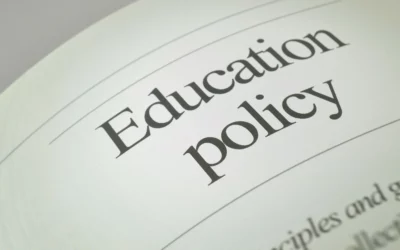
Written by Derek Monson
February 4, 2022
A large amount of legislators’ time during the general legislative session is spent in committee meetings. For example, past general session calendars reveal that the bulk of mornings and afternoons of legislators are spent in committee hearings until the last three days of the session. These meetings draw news coverage when a committee votes to send (or not) significant or controversial legislation to the full body of representatives or senators for a vote.
Why do lawmakers spent such a large portion of time reviewing legislation and policy issues in committees? What purpose does that serve? To put it simply, committees of legislators serve as an essential source of vetting and evaluation of legislation after an individual lawmaker has decided that an issue merits legislative action.
Once new legislation (also commonly referred to as a bill or a resolution, depending on its intended impact) is written and made public, it is sent to the House Rules Committee if the sponsoring legislator is a representative, or the Senate Rules Committee if the sponsoring legislator is a senator. The rules committees determine which category-specific committee – known as a standing committee (e.g., the House Education Standing Committee, the Senate Transportation Standing Committee, etc.) – to assign legislation for further consideration.
At its discretion, a rules committee may choose not to assign a bill or resolution to a standing committee, in which case the legislation will not progress further in the process. In the final days of the session, the House of Representatives will only debate and vote on legislation originating in the Senate, and the Senate will only consider bills originating in the House of Representatives. During these days, the House Rules Committee specifies which House bills the Senate will consider and in what sequence, and vice versa.
After a standing committee receives legislation from its respective rules committee, the committee chair determines when it will be placed on a committee meeting agenda for consideration. In such meetings, standing committee duties are to examine legislation, amend or consider substitute versions if they deem it necessary, and then report the legislation back to the full legislative body they serve. Examining legislation in a standing committee meeting typically involves a presentation from the sponsor of the bill or resolution, comments from members of the public supporting or opposing it, and a discussion and vote among standing committee members regarding what to do with the legislation.
If a standing committee votes to favorably recommend legislation to its respective body, it will go to the full Senate or House of Representatives for a potential vote. If legislation fails to gain a favorable committee recommendation, it will typically not progress further in the legislative process.
Due to the role that rules committees and standing committees play, they are a significant focus of lobbying efforts for and against legislation. Most bills that fail to move forward in the legislative process are stopped at the level of a rules committee or standing committee.
In an ideal scenario, all legislation that becomes law will have been evaluated and recommended favorably by standing committees in both the House of Representatives and the Senate. But because of time limitations in Utah’s 45-day legislative session, some bills become law after having only been examined in the standing committee of the House or the Senate. Passage of legislation that has not been evaluated by standing committees in both legislative bodies has been the source of significant public debate and controversy over the years.
While sometimes obscure and complicated, the role of rules committees and standing committees is essential to fulfilling the consensus-building design of Utah’s legislative process. Committee meetings generate consensus by regularly resulting in amendments to or substitution of legislation to address legitimate public concerns about its impacts. Through the vetting and refining of the committee process, public policy is improved as informed citizens and organizations engage in the development and reform of Utah’s laws and government programs.
More Insights
Read More
Looking at Supreme Court and religious freedom through the lens of the presidential campaign
Two constitutional issues highlight similarities and differences between the Biden and Trump administrations.
Education policy to consider during the 2024 election season
Here’s a look at what each presidential candidate is likely to focus on in education, given their track records and campaign platforms.
Ignoring the text of the Constitution is a mistake
A written Constitution is entirely superfluous if the document is simply meant to give the people what they want.


